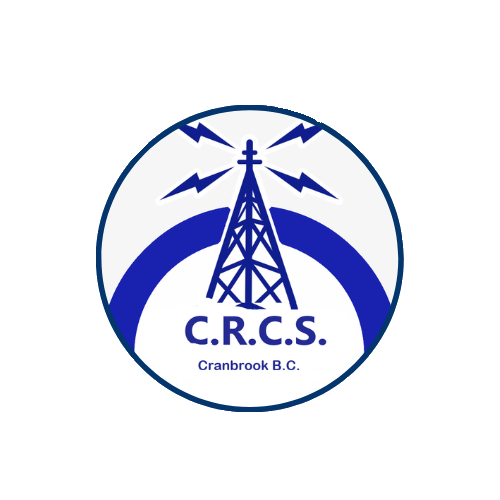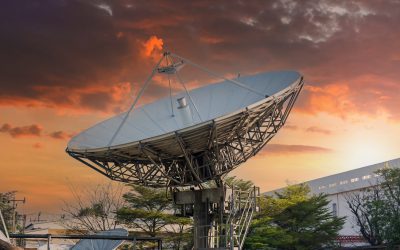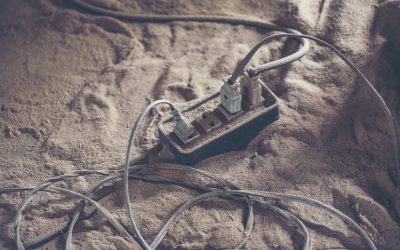If you’ve ever participated in a 48-hour contest, manned a Field Day station through the night, or settled in for a long roundtable with friends, you know one thing for certain: comfort, clarity, and reliable audio are non-negotiable for long operating sessions. The right headset can make the difference between a successful marathon on the bands and calling it quits early due to fatigue, discomfort, or audio issues.
At the Cranbrook Radio Club Society (CRCS), we’ve logged countless hours at the mic—logging, contesting, and just plain enjoying the hobby. Over the years, we’ve learned that choosing the right headset is as crucial as picking the perfect antenna or radio. In this comprehensive guide, we’ll break down everything you need to know about selecting the best headset for your long operating sessions—so you can focus on making contacts, not fussing with gear.
Let’s dive in!
Why Your Headset Matters for Long Operating Sessions
Think about it: during long operating sessions, you might spend hours with headphones clamped over your ears and a mic in front of your mouth. That means your headset isn’t just an accessory—it’s your direct connection to the airwaves and your fellow operators.
A good headset for long operating sessions should:
- Deliver clear, fatigue-free audio for both receive and transmit.
- Offer a comfortable fit, even after hours of continuous use.
- Minimize shack noise and distractions.
- Stand up to the rigors of contesting, public service events, or casual nets.
- Integrate seamlessly with your radio, without complicated adapters or troubleshooting.
Neglect these factors, and you risk everything from sore ears and headaches to missed calls and lost points. But choose wisely, and you’ll gain a genuine edge—whether you’re chasing rare DX or enjoying a marathon ragchew.
Key Considerations When Choosing a Headset
With so many options on the market, it’s easy to get overwhelmed. Here’s a CRCS-tested checklist to help you zero in on the best headset for long operating sessions:
1. Comfort is King
For long operating sessions, comfort isn’t optional—it’s essential. Look for:
- Padded ear cups: Soft, breathable material (like velour or memory foam) reduces pressure and heat buildup.
- Adjustable headbands: A flexible, well-cushioned headband helps distribute weight and prevent hotspots.
- Lightweight design: Heavy headsets can become tiring over time. Aim for something you’ll barely notice after an hour.
CRCS Tip: Try the headset on (if possible) before buying. Wear it for at least 10–15 minutes to spot potential pressure points.
2. Open-Back vs. Closed-Back: Know the Difference
- Closed-back headsets seal around your ears, blocking out shack noise and preventing audio leakage. Perfect if you operate in a shared or noisy environment.
- Open-back headsets allow some sound in and out. They often sound more natural and “airy,” but won’t isolate you from your surroundings.
For long operating sessions, closed-back designs are generally preferred for focus and noise rejection, especially in contest stations or busy club shacks.
3. Audio Quality: Clarity Over Hi-Fi
You don’t need thunderous bass or sparkling highs for ham radio. What you do need is clear, intelligible receive audio and a microphone that faithfully reproduces your voice.
- Frequency response: Headsets designed for voice communication typically focus on the 300 Hz–3 kHz range, making speech crisp and easy to copy.
- Distortion and coloration: Avoid “boomy” or muffled headsets—these can make weak signals hard to copy during long operating sessions.
CRCS Tip: Some headsets have built-in tone controls or can be paired with external equalizers for customized audio.
4. Microphone Quality and Placement
A good mic is as important as good headphones. Look for:
- Boom microphones: Easily adjustable and consistent placement means your audio stays clear all session long.
- Noise-canceling features: Reduces background noise from fans, computers, or other operators.
- Impedance and wiring compatibility: Make sure the headset mic matches your radio’s input requirements—dynamic vs. electret, mono vs. stereo, etc.
CRCS Tip: Consider a headset with a removable or replaceable boom mic for longevity and flexibility.
5. Durability and Build Quality
Long operating sessions can be hard on equipment—think sweat, snacks, and the occasional accidental drop. Look for:
- Sturdy hinges and cables: Reinforced strain relief and detachable cables are a plus.
- Replaceable pads and parts: Extends the life of your investment.
- Proven track record: Headsets designed for aviation, broadcast, or gaming often withstand heavy use.
Popular Headset Choices for Amateur Radio
Let’s get practical. Here’s a rundown of some well-loved options in the ham community, suitable for long operating sessions:
1. Heil Sound Pro Set Series
A classic for a reason. Heil’s headsets are purpose-built for amateur radio, offering excellent comfort, clear audio, and a range of mic elements for different radios. The Pro Set 3 and Pro Set Elite are both favorites among contesters and DXers.
2. Yamaha CM500
Affordable, lightweight, and surprisingly comfortable, the CM500 is a go-to for many hams. It features a sensitive electret mic (phantom power required) and plush ear pads for long sessions.
3. Radiosport RS20S and RS60CF
If you’re serious about contesting or multi-operator events, Radiosport headsets are hard to beat. They offer aviation-level comfort, outstanding noise isolation, and modular cables for different radios.
4. Gaming Headsets (Logitech, Sennheiser, Audio-Technica, etc.)
Don’t overlook quality gaming headsets. Many provide excellent comfort, clear audio, and built-in mics. Just ensure compatibility with your rig—adapters may be needed for mic wiring or impedance.
5. Aviation and Broadcast Headsets
Brands like David Clark and Bose Aviation provide all-day comfort and ruggedness. While pricier and sometimes requiring adapters, they’re worth considering for operators spending many hours on the air.
Adapters and Compatibility: Avoiding Headset Headaches
One of the biggest challenges in choosing a headset for long operating sessions is ensuring it plays nicely with your radio. Here’s what to watch for:
- Mic type: Dynamic mics (common in pro headsets) require more gain than electret mics (common in consumer headsets). Check your radio’s mic input specs.
- Wiring and pinout: Not all rigs use the same connectors or wiring. Consult your radio’s manual and consider third-party adapters (such as those from Heil or West Mountain Radio).
- PTT (Push-To-Talk): Some headsets have built-in PTT switches; others require a separate footswitch or hand control.
CRCS Tip: If you operate multiple radios, look for headsets with modular cables or quick-change adapters.
Tips for Maximizing Comfort and Performance During Long Operating Sessions
Once you’ve chosen the perfect headset, a few simple habits can help you stay comfortable and sharp, even during marathon operating events:
- Take regular breaks: Remove your headset every hour to stretch and relieve pressure on your ears and head.
- Keep ears and headset clean: Wipe down ear pads, especially during warm weather or intense sessions.
- Adjust fit frequently: Shift the headset slightly to avoid pressure points and “hot ears.”
- Hydrate and snack wisely: Dehydration and hunger can worsen fatigue. Keep water and light snacks handy.
- Monitor your audio: Periodically check your transmit audio using your rig’s monitor function or ask for a signal report. A failing mic cable or misaligned boom can sneak up on you!
Troubleshooting Common Headset Issues
1. Audio Fatigue
If you find yourself getting tired or irritable during long operating sessions, try lowering the volume, adjusting tone controls, or switching to an open-back headset for a session.
2. Headset Slipping or Squeezing
If your headset feels too loose or tight, adjust the headband or try different ear pad sizes. Some aftermarket pads (like those for aviation or gaming headsets) can increase comfort dramatically.
3. Mic Not Keying or Audio Issues
Double-check connections and adapter wiring. If using a footswitch for PTT, ensure it’s compatible with your radio’s configuration.
4. RF Feedback
If you’re experiencing buzzing or distortion on transmit, try adding ferrite chokes to your headset cable, especially if running high power.
CRCS Member Picks: Our Favorite Headsets for Long Operating Sessions
We asked our club members to share their top headset choices for long operating sessions. Here’s what they said:
- Heil Pro Set 3: “Unbeatable comfort for all-night contesting—never gets hot, and the HC-6 element is perfect for my Icom.”
- Radiosport RS20S: “Rugged, quiet, and easy to clean. After 12 hours, I almost forget I’m wearing it.”
- Yamaha CM500: “Great value and sound quality. I use it for both radio and Zoom club meetings.”
Invest in Your On-Air Comfort
At the end of the day, your headset is more than just a tool—it’s your lifeline during long operating sessions. Don’t settle for the cheapest option or whatever’s lying around. Take the time to find a headset that fits your operating style, station setup, and personal preferences.
A comfortable, clear headset means you’ll enjoy more hours on the air, make more contacts, and leave every QSO with a smile (and no sore ears!). If you’re not sure where to start, ask your club members—at CRCS, we’re always happy to share our experiences and help you find the perfect fit.
Remember: the best radio sessions are the ones you can enjoy from beginning to end. Here’s to long, successful operating sessions—and the right headset to get you there.
73 from all of us at Cranbrook Radio Club Society—see you (and hear you) on the bands!




